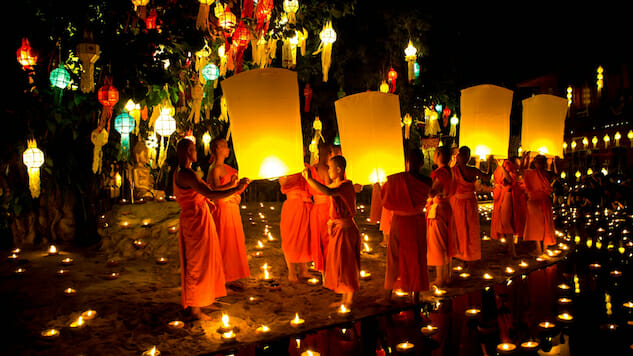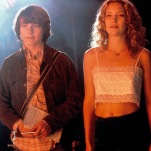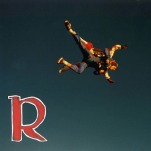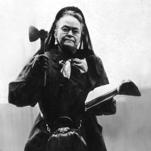How to Time Travel in Asia by Way of the New Year
Photo below courtesy of sereechaise/Pixabay
Out of all the magic that I experienced in Asia—from the silk trees of Angkor Wat to rooftop sunsets in Varanasi—the greatest by far laid in my inadvertent discovery of how to time travel. And not in the atavistic sense of “I felt like I stepped back in time during that guided tour,” but in the sense that by traveling to a different culture, with a different calendar, I was able to celebrate four different New Years in five months.
From Thailand to Vietnam to Nepal, I witnessed and participated in each celebration with a different cultural lens. Time travel enthusiasts, take note: a penchant for bus rides, and an elementary understanding of moon cycles, is all you need to break free of linear constraints and enter another dimension.
New Year No. 1: Thai Lunar Calendar Celebration of Loy Krathong in Chiang Mai, Thailand (Late November)
Loy Krathong (pictured at top) is a lunar new year festival celebrated throughout Southeast Asia by wishing upon a woven basket and floating it downstream. In Northern Thailand, this celebration coincides with Yi Peng, or “Two full moon day,” and is the flashy, more photogenic twin of Loy Krathong. With the intention of making merit (Buddhist speak for good deeds), celebrants light candles in large paper lanterns that rise to the sky. The lanterns dance amongst thousands of others to create a swirling galaxy of good karma.
I celebrated Loy Krathong in Chiang Mai, Thailand’s cultural capital. Thai people knelt at the river’s banks, praying intently, before releasing their baskets. Foreigners released lantern after lantern—occasionally writing their wishes and initials on the parchment.
Visually stunning, Loy Krathong made its mark as the most good willed, peaceful celebration I’d ever encountered. The drifting lanterns and baskets contained wishes for health, good fortune and friendship—good deeds, indeed.
New Year No. 2: Roman Calendar New Year, Pai, Thailand (December 31)
Pai, a tourist town four hours outside of Chiang Mai, slings hammocks and expat life with equal charm. Every night, vendors roll out food carts, wares and music for the hundreds of street-roaming foreigners clad in elephant-print Alibabas. Pai’s laid-back attitude and accessible outdoors makes it a favorite for travelers desiring an easier go at traveling life. Scammed in Cambodia? Sweaty in Bangkok? Harassed in Ho Chi Minh? Go to Pai. Thai hospitality, kindness and generosity pulses throughout, while those who harbor no delusions about cultural authenticity can enjoy conversation and cuisine in eateries catered toward a Western palate.
Because of its Western influence, New Years in Pai felt remarkably American. Fireworks of the loud, close to the ground, snappish variety, scared the dogs and left my ears aching. Carousing took place in the streets. Any given night in a tourist town sees at least ten people working on their “drunkest night in Asia” story—that New Years counted for double time.
I was on a heavy course of antibiotics, and enjoy fireworks about as much as the dogs that ran shaking for cover. But Pai magic had entered my veins. I ate Pad Thai and watched the streams of people, not baskets, pass my bungalow.
New Year No. 3: Vietnamese Lunar New Year in Dalat, Vietnam (Early February)

Photo by Paula Bronstein/Getty
The Vietnamese New Year Tet is one of the country’s most important holidays, with families coming together from all over the country to celebrate and partake in a series of traditions. The most interesting of these centers around who enters the house on the first day of the New Year. A person with high karma is a shoe-in, and represents the blessings the household will receive. Anyone who has lost a family member in the last year, or is deemed immoral or otherwise unfortunate must stay out for fear they will shepherd in unlucky energy that hangs around during the next solar cycle.
Dalat, a mountain-resort-honeymoon hideaway, attracts thousands with its enchanting rose gardens, misty mountains and lakes circled by swans and lovers. It is a popular place to celebrate Tet, and a 15-minute motorbike ride from Truc Lam: the Zen monastery where I celebrated. Participation in monastic life is voluntary—no nun will ever force you to do anything—but the experience of working side by side with the women made it worthwhile. I spent much of my time preparing Bánh tét, a specialty item of sticky rice wrapped in a banana leaf, secured with twine.
On New Year’s Day I ate Bánh tét, showed the nuns a red envelope with 20,000 Dong that my hostel had given me (a sweet surprise of “lucky money” for the holiday), and spoke with the visitors and pilgrims who traveled to the monastery as part of their wish to usher in auspicious energy in the New Year. That night, I participated in a chanting ceremony that required me to kneel and bow while bathed in incense and a melodic language. Afterward, I received a laminated translucent paper leaf, a calligraphy blessing: “That you may always have safe passage when away from home.”
New Year No. 4: Nepalese New Year in Jomsom, Nepal (April)
I woke at 4 a.m. to cross Thorong La pass, the highest (and halfway) point of the Annapurna circuit. I had to reach it before the winds kicked in—winds so strong, I’d been told, they would buckle my knees, send my flying into a ravine. At 17769.03 feet, the view, and not the winds, took my breath away.
Still, I had to trek 12 more hours through baked mud fields, dry riverbeds and winds screaming full of dust to arrive in Jomsom, a town in the Mustang region. The Nepalese were celebrating Vikram Samvat, the first day of the New Year according to Nepal’s official calendar.
Family is extremely important to the Nepalese, and New Year celebrations are more about who you spend it with than what you do. Gift exchanges, special foods and rituals all revolve around sharing a joyous and sanctified celebration with the ones you love. That notwithstanding, the Nepalese are extremely generous. They toasted to me with apple brandy, smiled endlessly and talked to me about crossing the pass. To them, it was an everyday occurrence. Thousands of trekkers passed through the region yearly. To me, it was significant passage not just through the mountains, but time itself.
Elisia Guerena is a Brooklyn based writer, who writes about tech, travel, feminism and anything related to inner or outer space.







































